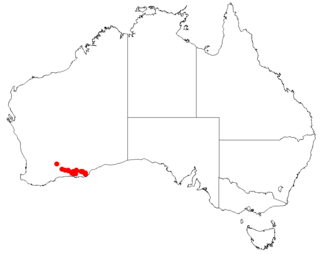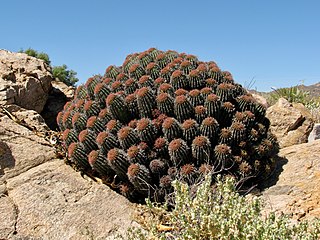
John Chapman, better known as Johnny Appleseed, was an American pioneer nurseryman who introduced apple trees to large parts of Pennsylvania, Ontario, Ohio, Indiana, and Illinois, as well as the northern counties of present-day West Virginia. He became an American legend while still alive, due to his kind, generous ways, his leadership in conservation, and the symbolic importance he attributed to apples. He was also a missionary for The New Church (Swedenborgian) and the inspiration for many museums and historical sites such as the Johnny Appleseed Museum in Urbana, Ohio. The Fort Wayne TinCaps, a minor league baseball team in Fort Wayne, Indiana, where Chapman spent his final years, is named in his honor.

A savanna or savannah is a mixed woodland-grassland ecosystem characterised by the trees being sufficiently widely spaced so that the canopy does not close. The open canopy allows sufficient light to reach the ground to support an unbroken herbaceous layer consisting primarily of grasses.

Smilax ornata is a perennial trailing vine with prickly stems that is native to Mexico and Central America. Common names include sarsaparilla, Honduran sarsaparilla, and Jamaican sarsaparilla.

The Restionaceae, also called restiads and restios, are a family of flowering plants native to the Southern Hemisphere; they vary from a few centimeters to 3 meters in height. Following the APG IV (2016): the family now includes the former families Anarthriaceae, Centrolepidaceae and Lyginiaceae, and as such includes 51 genera with 572 known species. Based on evidence from fossil pollens, the Restionaceae likely originated more than 65 million years ago during the Late Cretaceous period, when the southern continents were still part of Gondwana.

Kollikodon is an australosphenidan species, often classified as a monotreme but more recently recovered as an outgroup. It is known only from an opalised dentary fragment, with one premolar and two molars in situ, as well as a referred maxillary fragment containing the last premolar and all four molars. The fossils were found in the Griman Creek Formation at Lightning Ridge, New South Wales, Australia, as was Steropodon.

Harry Francis Smith is a Canadian professional wrestler. He is better known by the ring name Davey Boy Smith Jr.. Smith is a former three-time IWGP Tag Team Champion, two-time GHC Tag Team Champion, two-time NWA World Tag Team Champion and one-time MLW World Tag Team Champion. He is also appearing for World of Sport Wrestling using the name British Bulldog Jr. He is known for his tenures in Major League Wrestling (MLW), New Japan Pro-Wrestling (NJPW) and Pro Wrestling Noah, regularly teaming with Lance Archer as the Killer Elite Squad (K.E.S).

Selenicereus, sometimes known as moonlight cactus, is a genus of epiphytic, lithophytic, and terrestrial cacti, found in Mexico, Central America, the Caribbean and northern South America. The term night-blooming cereus is also sometimes used, but this is also used for many night-blooming cacti, including Epiphyllum and Peniocereus. In 2017, the genus Hylocereus was brought into synonymy with Selenicereus. A number of species of Selenicereus produce fruit that is eaten. The fruit, known as pitaya or pitahaya in Spanish or as dragon fruit, may be collected from the wild or the plants may be cultivated.

William Reynolds Archer Jr. is a retired American lawyer and politician. Archer served two terms, from 1967 to 1971, in the Texas House of Representatives – changing from the Democratic to the Republican party in 1969 – and later represented Texas in the United States House of Representatives as a Republican for 30 years, from 1971 until 2001, serving for his last six years as chairman of the powerful House Ways and Means Committee.

Helicia is a genus of 110 species of trees and shrubs, constituting part of the plant family Proteaceae. They grow naturally in rainforests throughout tropical South and Southeast Asia, including India, Sri Lanka, Indochina, Peninsular Malaysia to New Guinea and as far south as New South Wales.

Leucadendron strobilinum, commonly called the peninsula conebush, is a plant species in the genus Leucadendron—forming part of the family Proteaceae. Confined to the Cape Peninsula, it reaches a height of up to 2.6 metres growing in southern, damp rocky slopes at an elevation of 500 to 1100m. Its conservation status is Near Threatened—a result of inappropriate fire management, fire-break clearing and alien plant invasions.

Plants are mainly multicellular organisms, predominantly photosynthetic eukaryotes of the kingdom Plantae. Historically, plants were treated as one of two kingdoms including all living things that were not animals, and all algae and fungi were treated as plants. However, all current definitions of Plantae exclude the fungi and some algae, as well as the prokaryotes. By one definition, plants form the clade Viridiplantae, a group that includes the flowering plants, conifers and other gymnosperms, ferns and their allies, hornworts, liverworts, mosses, and the green algae, but excludes the red and brown algae.

Archeria traversii is a species of shrub in the family Ericaceae.

Cassine is a genus of trees, of the plant family Celastraceae.

Persoonia cymbifolia is a species of flowering plant in the family Proteaceae and is endemic to the south of Western Australia. It is an erect, spreading shrub with smooth bark, hairy young branchlets, linear to narrow oblong leaves and yellow flowers borne singly or in groups of up to three on a short rachis.
Persoonia cordifolia is a species of flowering plant in the family Proteaceae and is endemic to a restricted area in the south of Western Australia. It is an erect, rounded to spreading shrub with smooth, mottled grey bark, broadly heart-shaped leaves and bright yellow flowers borne in groups of two to eight along a rachis up to 25 mm (0.98 in) long.

Excoecaria simii, the forest pepper-seed or forest pepper-seed bush, is a species of flowering plant in the family Euphorbiaceae. It is endemic to South Africa, in forests of KwaZulu-Natal and Eastern Cape.

Euphorbia stellispina is a species of flowering plant in the family Euphorbiaceae endemic to southern Africa. It is locally known in Afrikaans as skaapnoors, sterretjie-noors, or Karoo noorsdoring. Euphorbia stellispina grows in rocky areas of karroid shrublands.















